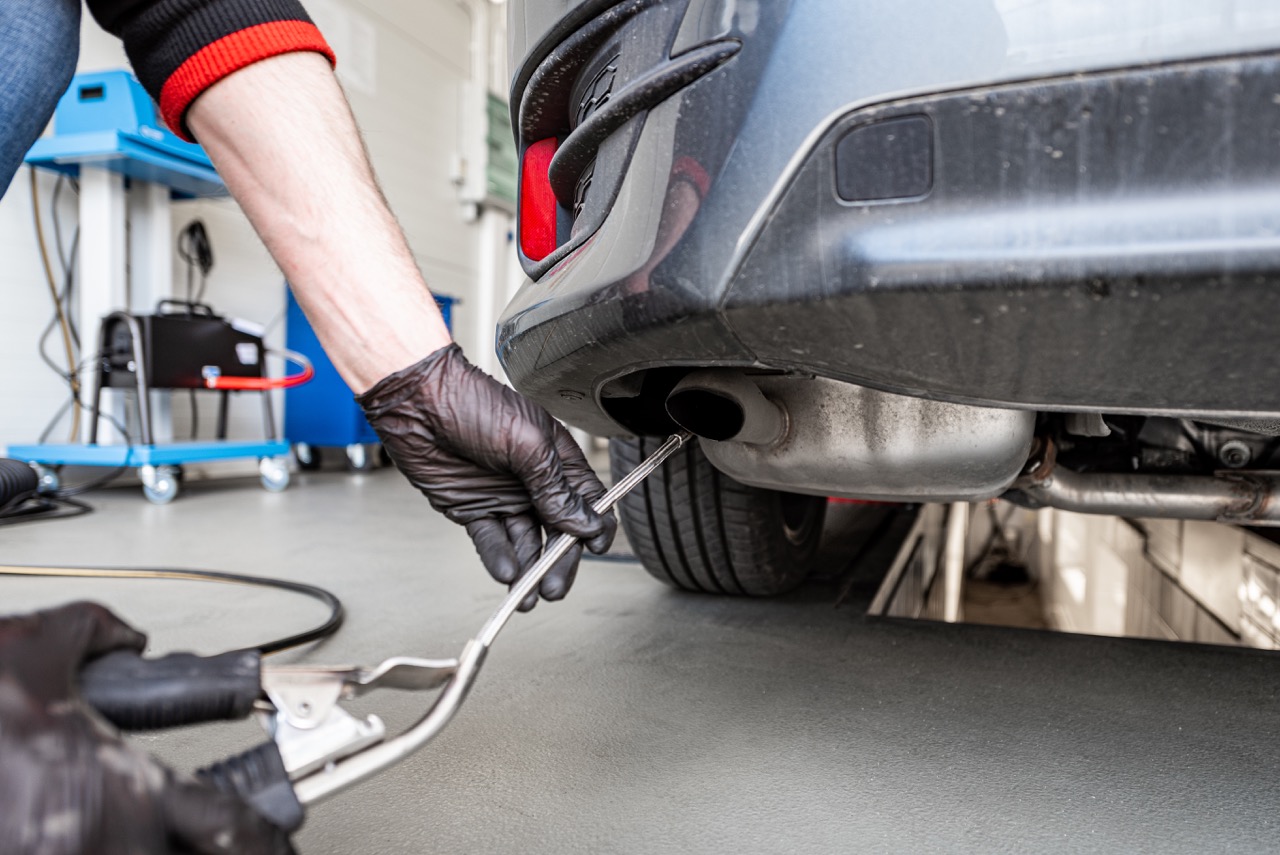
If you’re wondering whether or not you need to have your vehicle’s emissions tested, Brigham City Master Muffler has the answer.
According to the Utah DMV, as of January 2018 annual safety tests are no longer required for all vehicles registered in Utah. But what about emission testing requirements in Utah? Across the state, some counties do require an emissions test depending on the year a car was manufactured, while others do not. The age of a vehicle also factors into whether or not it requires a safety inspection.
Does My Car Need Emissions Testing?
Emissions testing depends on where you live, and your vehicle model year. Currently, Brigham City is not listed by the DMV as a county that requires vehicle emissions testing.
Cache County Emission Inspections
Vehicles registered in nearby Cache County only require a biennial emissions inspection if they’re older than six years. Biennial emissions testing is conducted as follows:
- Vehicles with an even-numbered model year (i.e. 2016, 2014) must be emissions tested in an even year.
- Vehicles with an odd-numbered model year (i.e. 2015, 2013) must be emissions tested in an odd year.
Farm vehicles are exempt from emissions testing, so you don’t have to worry about bringing your tractor to the DMV for inspection.
Weber County Emission Inspections
Vehicles registered in Weber County that are less than six years old only need emissions testing completed once every two years. Just as in Cache County, a vehicle with an even-numbered model year will be inspected in an even year, while an odd-numbered model year will be inspected in an odd year.
Does My Car Need a Safety Inspection?
In Utah, the DMV states that only the following vehicles need to be safety inspected, whether as a prerequisite for registration or because law enforcement requires it:
- Vehicles more than ten years old
- Vehicles with salvaged titles
- First-time street-legal ATVs
- Commercial vehicles
- Class 6 Motorhomes with three axles
Why We Test for Emissions
While you may see it as a regular annoyance, emissions tests are necessary for environmental purposes. If you’ve ever stood downwind of an idling vehicle, then you know the fumes it emits aren’t exactly pleasant. In a vehicle with a failing exhaust system, those fumes can actually be deadly.
Emissions tests measure how efficiently your vehicle is reducing pollutants before emitting exhaust into the air. Since the Environmental Protection Agency introduced the Federal Clean Air Act, vehicle emissions have been regulated to ensure they’re measuring up to EPA standards.
What Is Tested
When you bring your vehicle in for its routine emissions test, there are certain pollutants being measured in the exhaust.
- Carbon Dioxide (CO2)
- Hydrocarbons (HC)
- Carbon Monoxide (CO)
- Nitrogen Oxide (NOx)
The presence of these elements in the atmosphere can contribute to smog, and damage the ozone layer. In an effort to improve air quality, it’s important that our vehicles don’t exceed the recommended amount of fumes or particulate matter emitted.
TESTING METHODS USED
Acceleration Simulation Mode
In this test, cars that are too old to have onboard diagnostics can be checked for emissions output. The ASM test uses a dynamometer and tailpipe sensor to measure pollutants in the emissions.
On-Board Diagnostic Inspection
For any vehicle manufactured in 1996 or later, this is the preferred method of emissions testing. The vehicle’s on-board diagnostics can be read to see what the emissions output is, and how it compares to EPA standards. The OBD inspection ensures that all systems are functioning properly and that problems are accurately being identified by the onboard diagnostics to alert the driver of needed repairs or maintenance.
Two-Speed Idle Test
This is a test of yore, but it can still be an indicator today that there’s something wrong with your vehicle. Older vehicles used to be subject to an idle test, in which the idling speed is tested while parked, and when the vehicle is revved to 2500 RPM.
If your vehicle fails the emissions test, you’ll need to complete the necessary repairs on your muffler or exhaust to get it up to EPA standards before being able to register it for another year. If Master Muffler Brigham City can be of help with a tune-up or exhaust system repairs, call (435) 363-0340 to schedule an appointment today.
Related Posts
As an EV owner, understanding your vehicle's battery is critical. From its capacity to its lifespan, and everything in between, we'll guide you through what you need to know to optimize your EV experience. So buckle up and get ready - we're about to shed some light on the electrifying world of EV batteries. What [...]
If your car is running hot, it can be a sign that something’s not right with your engine. Fortunately, diagnosing the cause of an overheating engine isn't too difficult if you know what to look for and how to address it. Keep reading if you want to learn the most common issues that occur when [...]
Your vehicle's exhaust system serves a critical role in managing the byproducts of the combustion process and ensuring optimal engine performance. The appearance of colored smoke from the exhaust pipe, either when stationary or accelerating, can provide valuable clues to underlying mechanical issues. What is a car exhaust? A car exhaust is a system [...]



